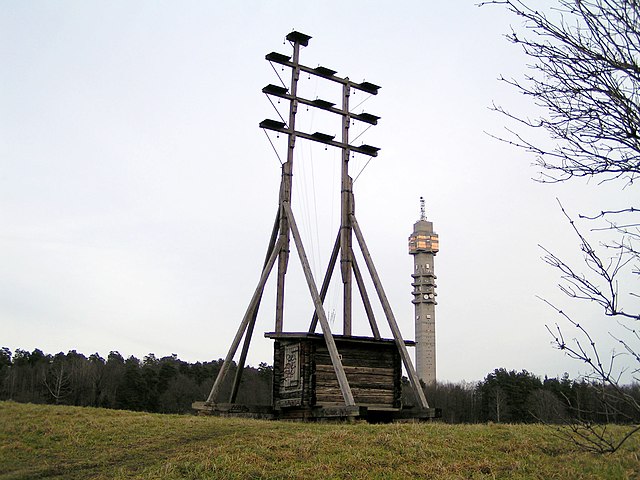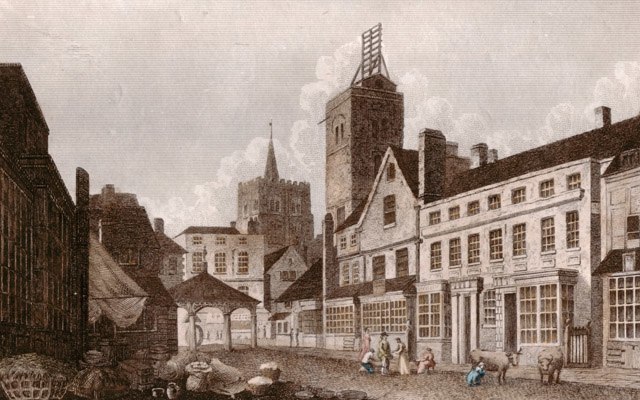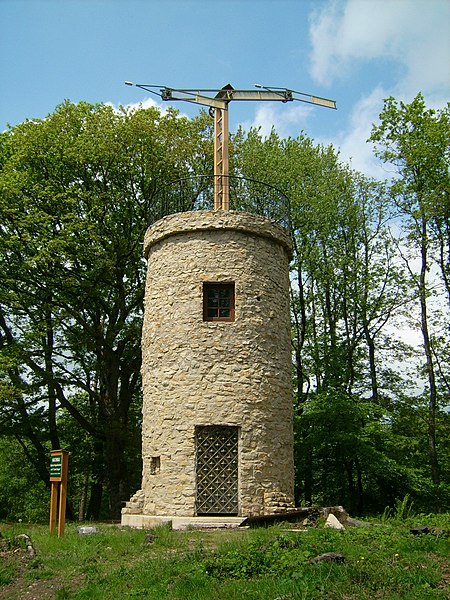An optical telegraph is a line of stations, typically towers, for the purpose of conveying textual information by means of visual signals. There are two main types of such systems; the semaphore telegraph which uses pivoted indicator arms and conveys information according to the direction the indicators point, and the shutter telegraph which uses panels that can be rotated to block or pass the light from the sky behind to convey information.
A replica of an optical telegraph in Stockholm, Sweden
St. Albans High Street in 1807, showing the shutter telegraph on top of the city's Clock Tower. It was on the London to Great Yarmouth line.
A cartoon strip of "Monsieur Pencil" (1831) by Rodolphe Töpffer
Optical communication, also known as optical telecommunication, is communication at a distance using light to carry information. It can be performed visually or by using electronic devices. The earliest basic forms of optical communication date back several millennia, while the earliest electrical device created to do so was the photophone, invented in 1880.
A naval signal lamp, a form of optical communication that uses shutters and is typically employed with Morse code (2002)
A replica of a Chappe telegraph tower (18th century)
An air traffic controller holding a signal light gun that can be used to direct aircraft experiencing a radio failure (2007).






